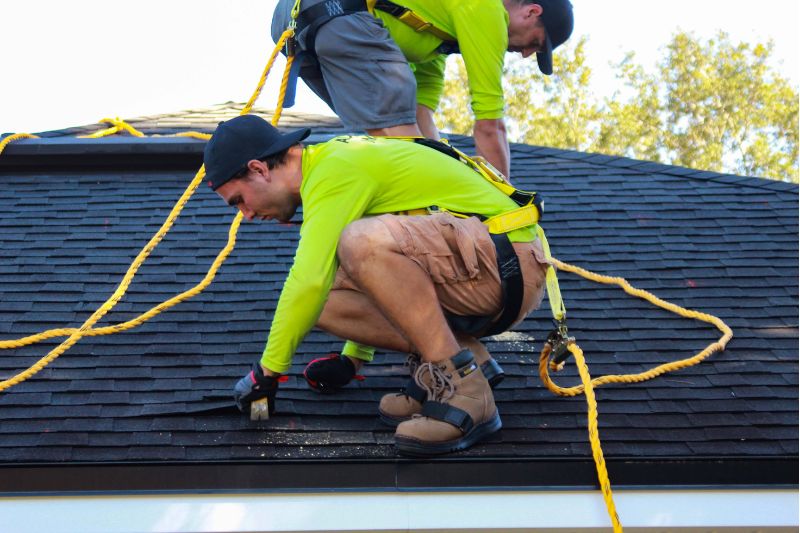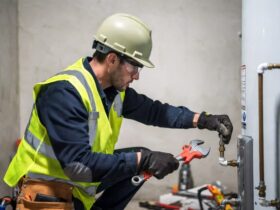No products in the cart.
A Comprehensive Guide to Roof Installation and Maintenance

Welcome to our comprehensive guide to roof installation and maintenance. A well-built and regularly maintained roof is an integral part of any structure. It not only serves as a protective shield from various weather conditions but also contributes to the overall aesthetic appeal and energy efficiency of your home or building. Whether you’re a homeowner looking to understand the intricacies involved in roof installation, an enthusiast keen on the DIY route, or a professional seeking to enhance your skills, this guide offers a wealth of knowledge. We’ll walk you through the fundamental aspects of roof installation and highlight the key practices for keeping your roof in optimal condition. Buckle up and let’s embark on this roofing journey together.
Understanding Different Roofing Materials
Here, we will discuss the wide array of roofing materials available, their pros and cons, and their suitability based on various factors such as climate and building structure. Asphalt shingles are the most popular choice, being cost-efficient and easy to install. They come in a variety of colors and can be designed to mimic other materials such as wood or slate. Metal roofs are also gaining popularity due to their durability and energy efficiency. These come in aluminum, copper, and steel varieties that cater to different budgets and design preferences. Clay and concrete tiles offer a classic look that can be integrated into many architectural styles. Finally, flat roofs are often used for commercial buildings due to their low cost and ease of installation.
Roof Installation Techniques
This section will guide you through the step-by-step process of roof installation, including how to prepare the roof deck, laying underlayment, and installing roofing materials. It is critical to understand the specific techniques and safety measures associated with each type of roofing material. For instance, asphalt shingles must be installed in a certain way to ensure they are properly secured and can withstand exposure to weather elements. Similarly, metal roofs need additional insulation and fasteners to be securely affixed before installation. Generally speaking, whether you are relying on these reliable roofing contractors or you are doing the work yourself, you should never skip the important steps of proper preparation and installation. However, if you’re in doubt about any aspect of your roofing project, it is best to hire a professional.
Roof Ventilation and Insulation
Learn about the importance of proper ventilation and insulation for your roof’s longevity and your home’s energy efficiency. Roof ventilation helps to regulate the temperature inside your home and removes excess moisture that can lead to mold and mildew. A well-ventilated roof also reduces ice buildup in winter months, which in turn prevents damage from snow and ice. Proper insulation is also critical in keeping your home’s energy costs low as it helps maintain a comfortable internal temperature and prevents heat loss during cold weather.
Roof Maintenance Practices
This part will cover essential maintenance practices, including regular inspection, cleaning, and timely repair. It is important to regularly inspect your roof for any signs of damage such as missing, cracked, or curled shingles. You should also keep an eye out for mold growth and other indications of water leakage. Additionally, regularly cleaning away debris like leaves and branches will help keep your roof in top condition. Lastly, if you notice any problem with your roof, contact a professional as soon as possible. Timely repair can help you avoid costly replacements down the line.

DIY Roof Repair and When to Call a Professional
We’ll provide guidance on simple DIY roof repair tasks you can undertake and signs that indicate it’s time to call in professional help. While minor issues like patching and sealing can be addressed on your own, it is best to call a professional for major repairs such as replacing shingles. DIY tasks should only be attempted if you have the necessary tools and experience. No matter what repair or maintenance task you are undertaking, always wear protective gear and adhere to all safety protocols. Furthermore, always read the manufacturer’s instructions and applicable laws carefully before beginning any work.
Safety Measures During Roof Work
Lastly, this section will highlight the critical safety measures to adhere to when working on roofs. Falls from heights are a major cause of accidents and injuries, so you should always use the appropriate safety gear. This includes non-slip shoes, a harness or lifeline, and an anchor point. Additionally, inspect all tools and equipment for any damage before using them. Remember to also adhere to local regulations such as building codes and secure necessary permits prior to beginning your roofing project.
Proper roof installation and maintenance are vital to the lifespan of your roof and the overall safety and efficiency of your home or building. This comprehensive guide has journeyed through the multitude of roofing materials available, detailed the crucial steps of roof installation, and emphasized the importance of ventilation and insulation. It has also highlighted essential maintenance practices, laid out when it’s time to call in professionals, and underscored the necessity of safety measures during roof work.
Remember, your roof is not just a functional component of your home, but also part of its aesthetic appeal. Whether you’re a DIY enthusiast or a professional, always strive for quality workmanship, and when in doubt, never hesitate to seek professional advice. The longevity and performance of your roof are a testament to the effort and care invested in its installation and upkeep.















Leave a Reply